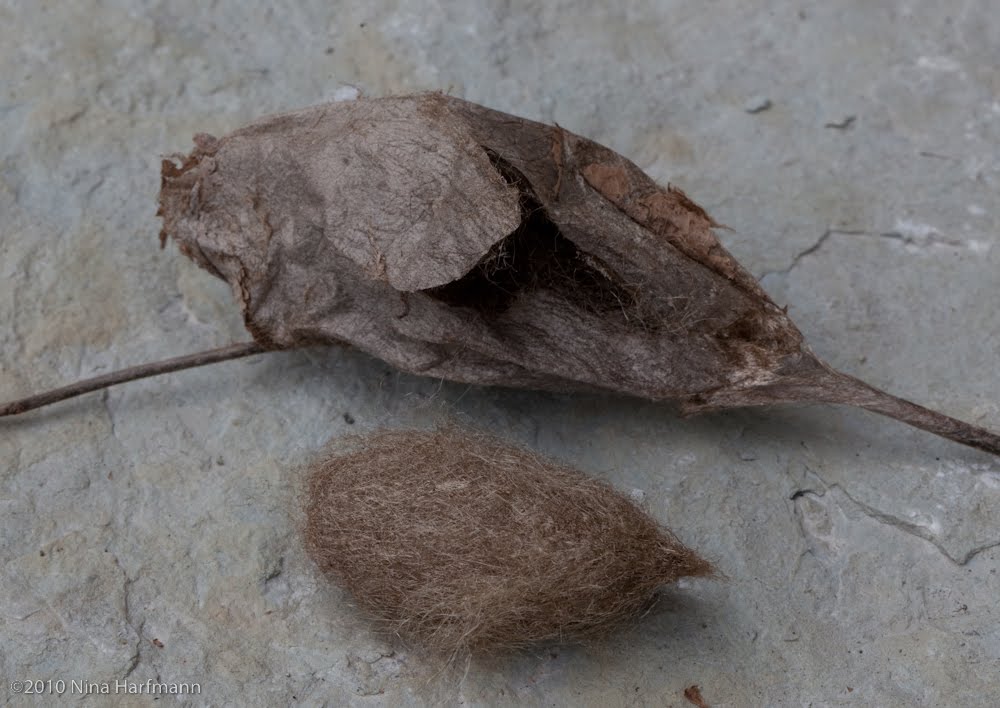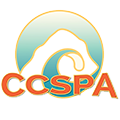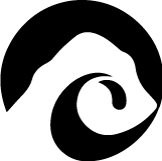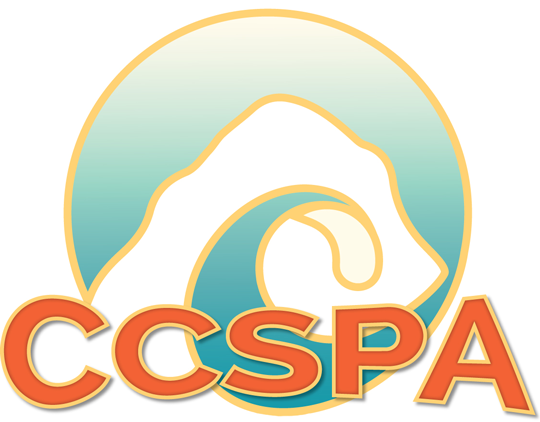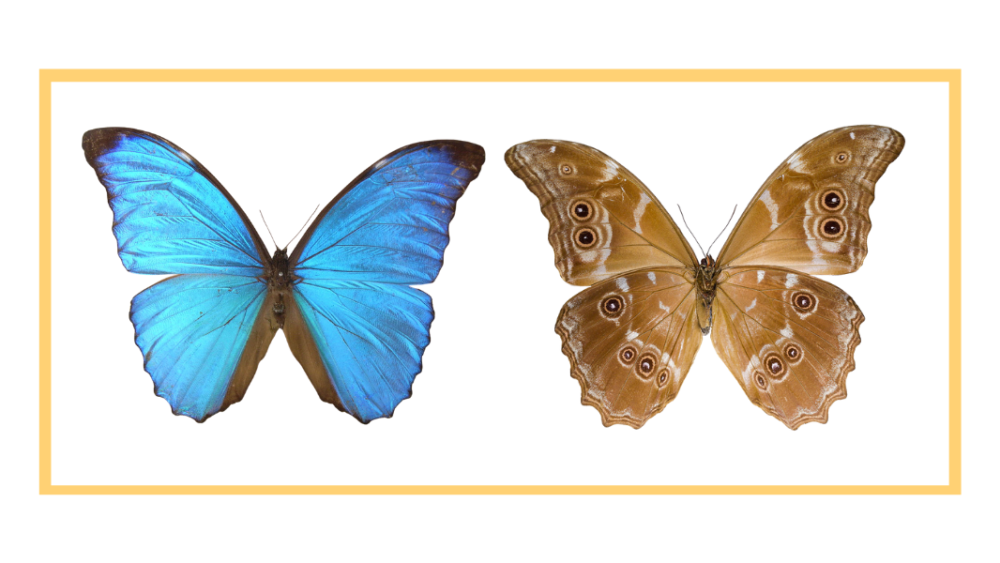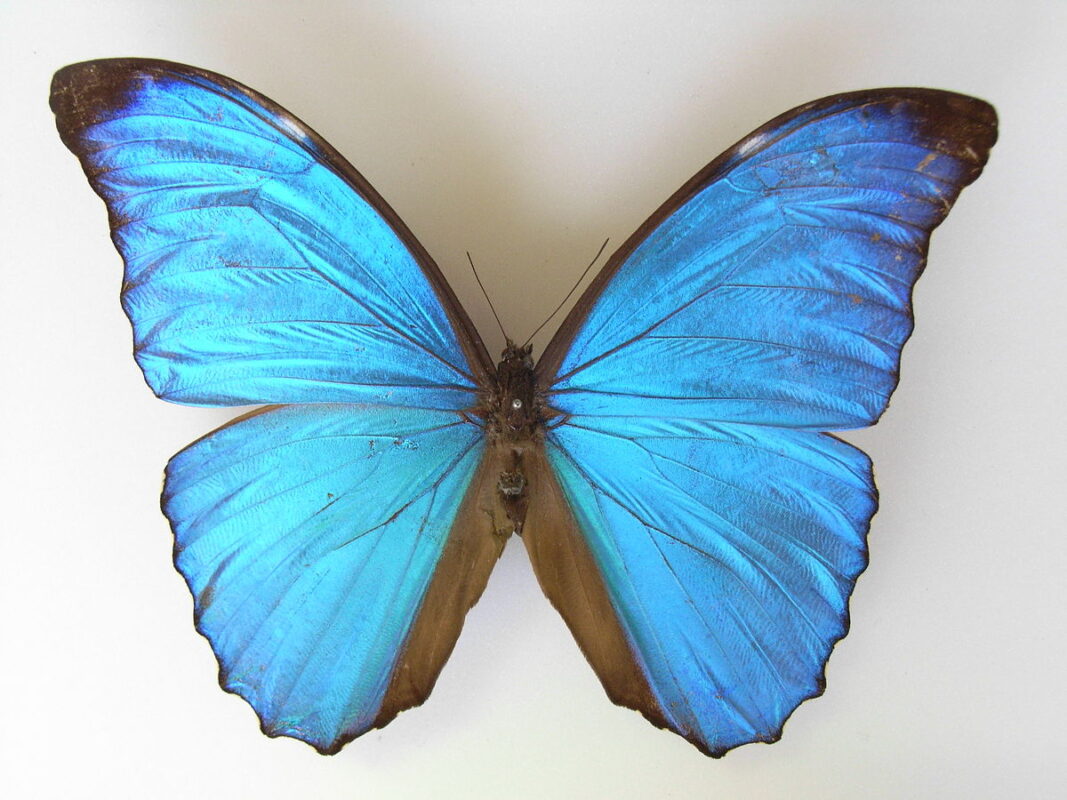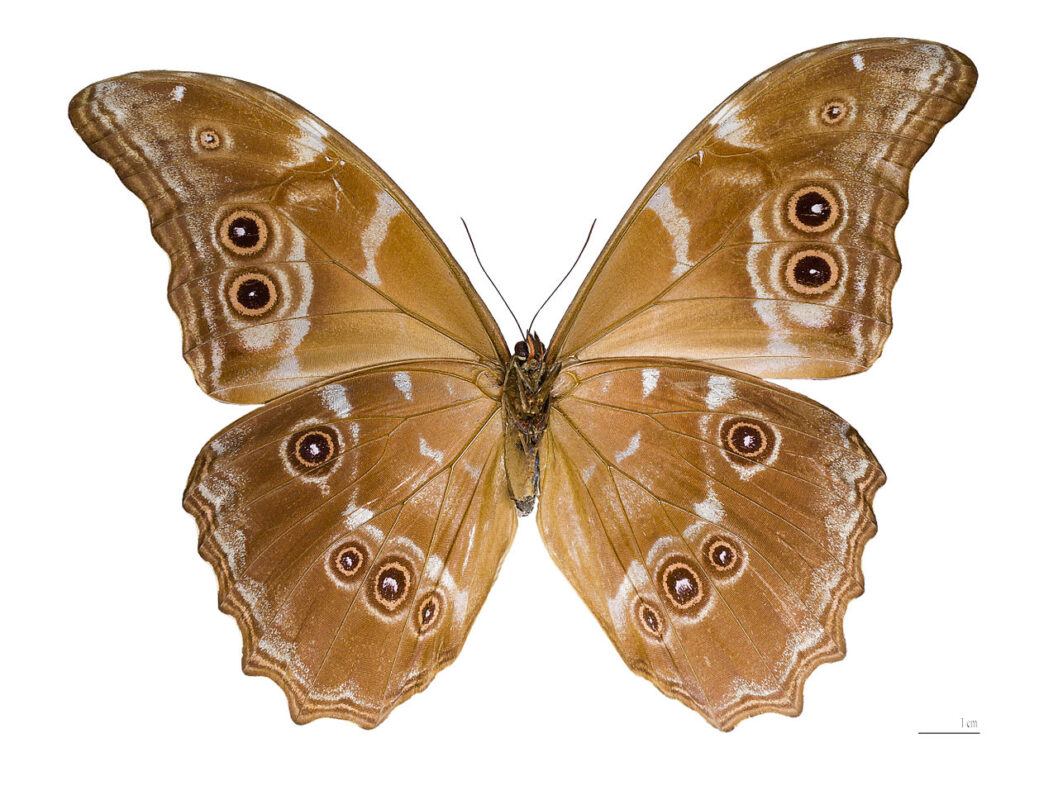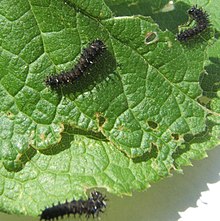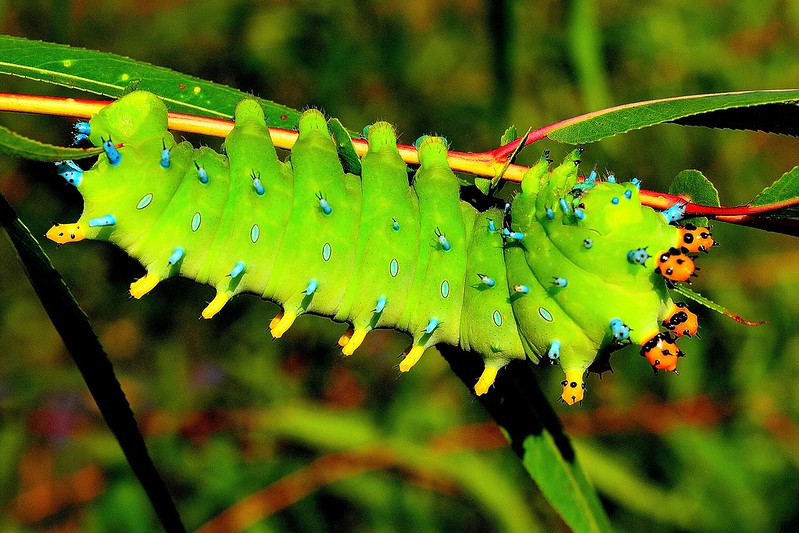Butterflies are a little different from moths:
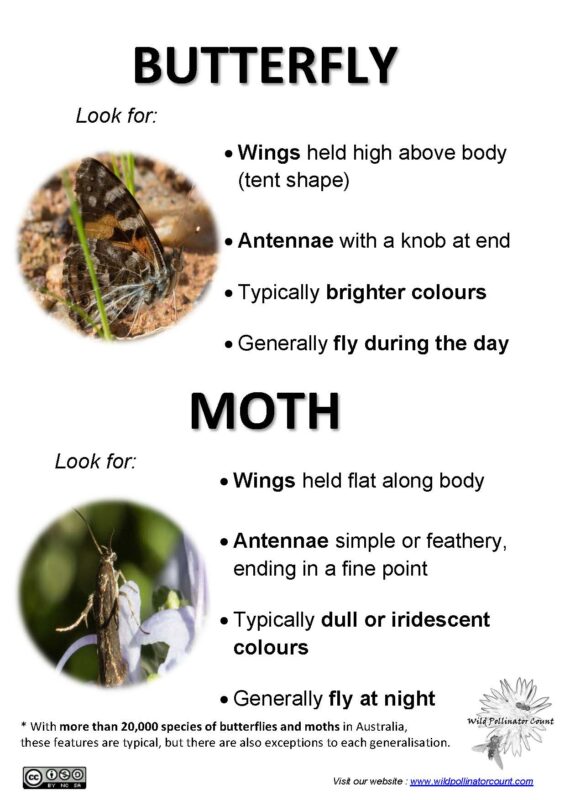
Butterflies are usually brightly colored and are active during the day. Their antennae are usually long and thin, ending in a bulb. Unable to hear, they use sight and color to find their food and mates. Sipping plant nectar with a long tongue, butterflies tend to rest with their wings closed up over their backs. Butterfly cocoons usually hang from branches.
Moths are usually less brightly colored than butterflies. Flying mostly at night, moths use scent and sound to find mates, collecting odor molecules with feathery antenna. Adult moths do not eat; their sole aim in life is to produce offspring. To stay warm moths move their wings. The wings stay open when the moth rests. Moth cocoons are usually on or under the ground. Notice we keep using the word “usually”. Not all butterflies and moths “follow the rules.” People made up “the rules” after watching many different butterflies -and moths.
Blue Morpho Butterfly
If you haven’t seen a Blue Morpho butterfly, there is one on display at the Montana de Oro farmhouse. Not local, but too interesting to ignore.
Wingspan is up to 8 inches!
The underside of the wings is dull brown with “eyespots”. Predators approaching the Morpho are startled by bright blue flashes when the wings open.
They live in tropical forests of Latin America.
Morphos taste with sensors on their legs and use their antennae to taste/smell the air to find rotting fruit, decomposing animals, tree sap, and fungi to eat. Their long tongue sucks up the liquid food. Morphos fly during the day and sleep at night with their wings folded over their backs.
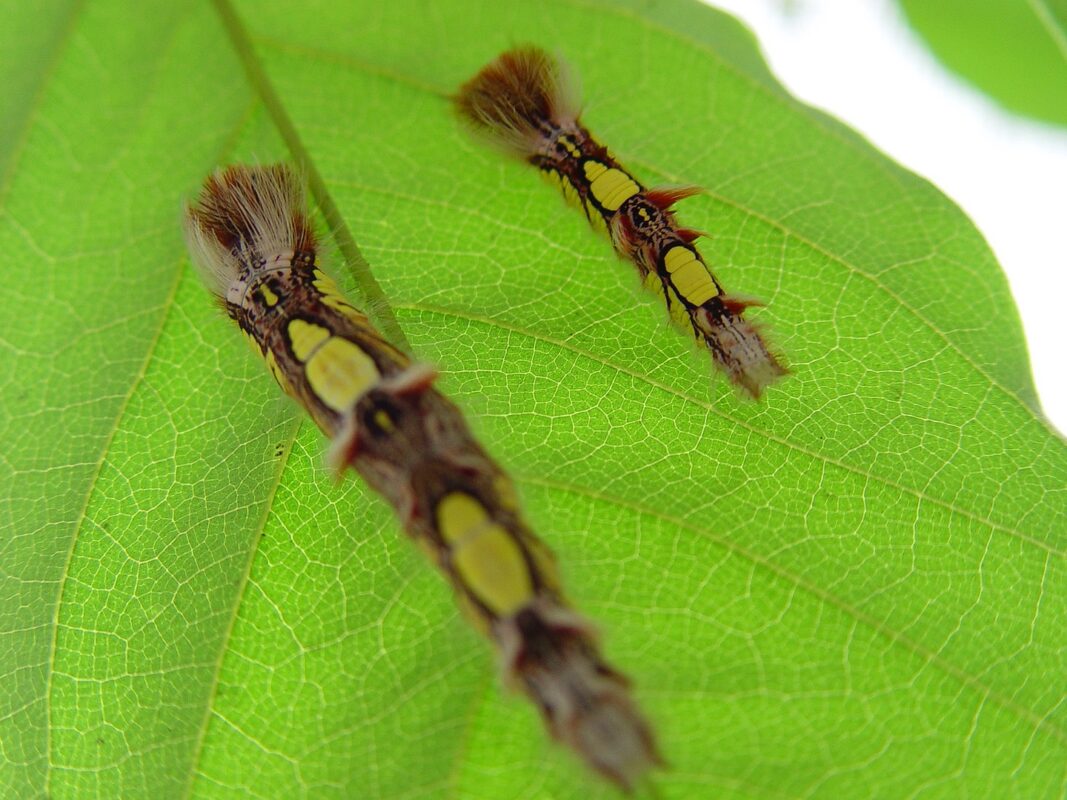
Morpho eggs are glued to the underside of a leaf so predators can’t find them. When they hatch, the caterpillars begin to eat leaves. There are prickly hairs on the caterpillars that irritate birds who try to eat them. As they grow they will need to molt about five times before finally forming a jade-green chrysalis. The chrysalis smells bad and emits an ultrasonic sound when touched by predators. The life cycle of the Blue Morpho Butterfly lasts about 115 days from egg to butterfly.
Cecropia Moth
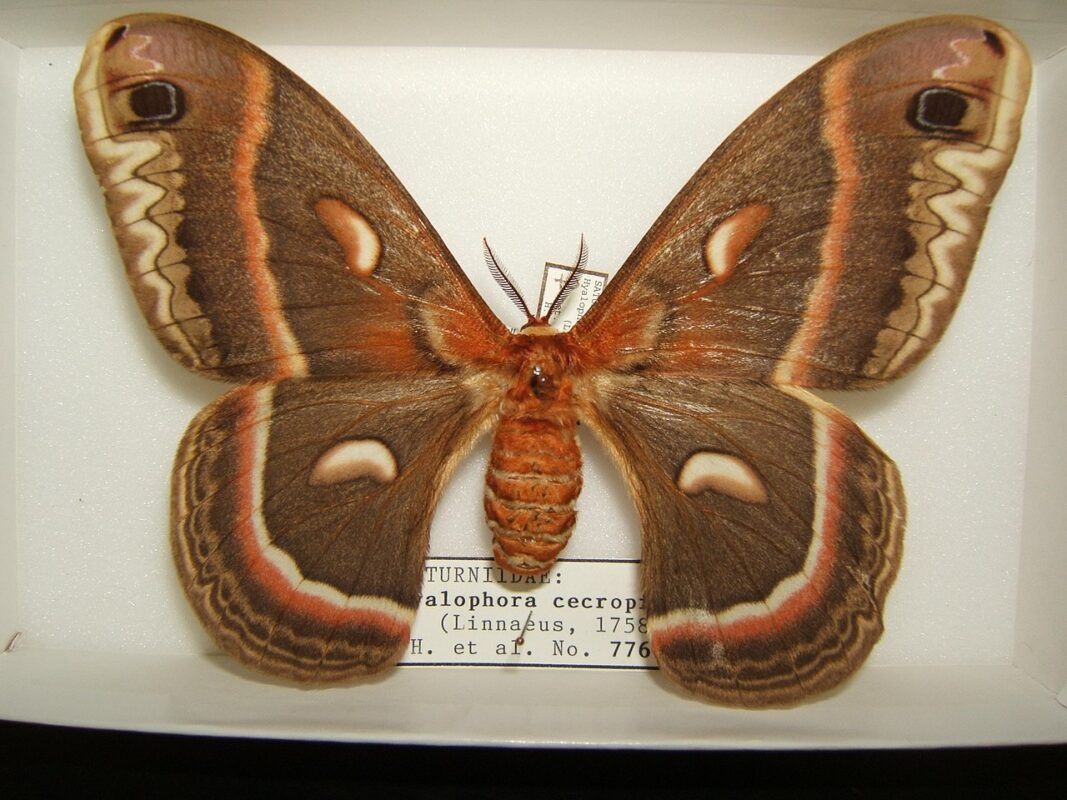
Found from British Columbia to Baja California, including our Central Coast! Adults hatch from cocoons in January and fly around early in the day. A Cecropia moth’s wingspan can be up to 6 inches!
The adults don’t eat, and only live about 2 weeks as an adult.
Males find the females using scent picked up by their antennae from up to a mile away. Females may lay 400 eggs, depositing them in various locations where food is available for the caterpillars.
Cecropia moth eggs hatch as tiny black caterpillars who immediately begin to eat leaves. The caterpillars eat a wide range of plants including Ceanothus, Manzanita, gooseberry, willows, and mountain mahogany.
As the larvae grow the color changes from yellow green to bluish green with colored bumps.
Late summer when they reach about 4.5 inches in length they spin long, large cocoons for the winter. Native Americans collected the cocoons, replaced the pupa with gravel, and used them as rattles and decorations on clothing. Adults hatch from the cocoons in early summer of the next year.
